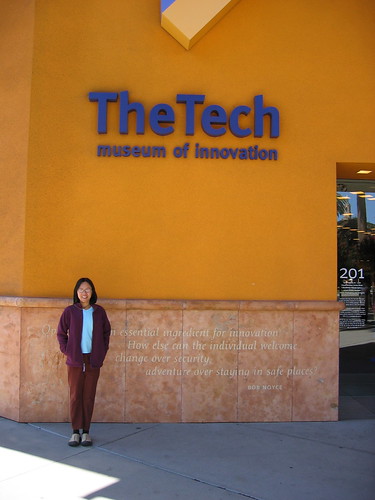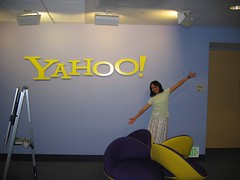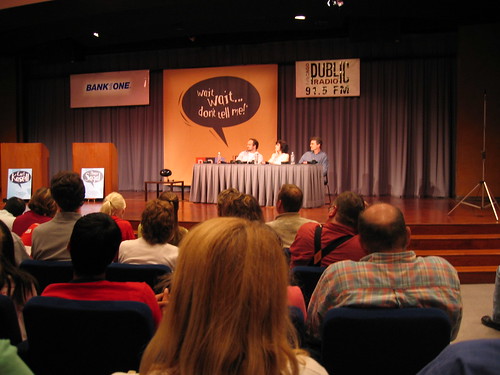This weeks New Yorker (Sept 5, 2005 - it's not online but sooner or later it will show up here) has an article by Malcolm Gladwell called "The Bakeoff" about the quest to create the ultimate cookie. The article profiles Mattson & Co, a Burlingame company that does independent development of new food products for most of the large food corporations and it's leader, Steve Gundrum. Gundrum wanted to develop a cookie that was healty (or at least healthier) than current cookies but that didn't sacrifice anything in taste. Gundrum apparently ran into Steve Jobs at an Apple Store (aside: I know about 5 people who this has happened to - does Jobs just hang out after work and sell Macs to people one at a time?) and met Mitch Kapor at a conference that turned him onto Open Source design ideas. He figured, designing software was like designing cookies recipies and some of the same ideas might be applicable. Gundrum has also heard of extreme programming (XP) so he decided to stage a contest between competing ideologies to develop the ultimate cookie.
- One team was a standard Mattson product development team
- The second team consisted of two development people working together doing rapid iteration a la eXtreme Programming - kind of. Rapid iteration is one of several requirements of XP - for example, it's not clear how unit testing applies when you're developing a cookie...
- The third team (referred to as "The Dream Team") consisted of a group of Mattson employees that were being directed by a mailing list of 15 industry food development experts from a variety of companies in a pseudo Open Source model.
The teams ran into different sort of problems. The Open Source Dream Team spent a lot of time bickering:
Eventually, Carol Borda, the Dream Team project leader, asked Gundrum whether she should try and calm things down. He told her no; the group had to find its "own kind of natural rhythm." He wanted to know what fifeteen high-powered bakers thrown together on a project felt like, and the answer was that the felt like chaos. They took twice as long as the XP team. They created ten times the headache. Worse, no one in the Open Source team seemed to be having any fun.
...
To Dan Fletcher, of Kellog's, "the whole thing spun in place for a long time. I got frustrated with that. The number of people involved seemed unweidly. You want some diversity of youth and experience, but you want to keep it close-knit as well. You get some depth in the process versus breadth. We were a mile wide and an inch deep"
The article goes on to highlight the weaknesses of the open source development model (citing
Joel Spolsky) and the oft made argument that open source excels only at cloning existing products like web browsers and Unix. Ok, perhaps but the cookie experiment is not exactly conclusive evidence that Open Source doesn't work because it doesn't follow the model very closely. I think they would have had much better results (and been closer to the open source model) if they had had the 15 experts go off and develop their own cookies independently, then see which ones were good and have the experts iteratively tinker with the best cookies. The net effects of Open Source development may be social but at the work level, it's individual people doing individual tasks.
The result of all this was three different cookies which were mailed to 300 households with the following results (I have no doubt numerous critical details were ommitted about how the study was conducted - this is the New Yorker, not JAMA):
- 14% of the respondents preferred the XP Developed Cookie
- 41% of the respondents preferred the Open Source Developed Cookie
- 44% of the respondents preferred the Mattson Development Team Cookie
Gladwell says the results are "close but unequivocal" - I'd say it's too close to make any real conclusion but as I said, there isn't enough info about how the study was done to really know. Apparently it was unequivocal because the Mattson cookie (its described as a "strawberry cobbler") is being put into development soon. More interestingly, Mattson apparently will license the cookie recipe at no cost to manufacturers provided a percentage of the profits go to a charitable organization - perhaps they did learn something from the open source model after all.
The article is definitely worth reading but (as a software person) I found the description of how foods are developed more interesting than their attempts to adapt software design methodology. I've written about Gladwell's excellent work in the past:
UPDATE: Jon Udell comments on the article here
 Someone recut a trailer for Stanley Kubrick's "The Shining" to make it seem like a feel good movie about a man named Jack, who's a failed writer looking for inspiration and a boy, Danny, who's looking for a father. It uses every sleazy movie trailer trick in the book complete with Peter Gabriel feel good soundtrack. Outstanding!
Someone recut a trailer for Stanley Kubrick's "The Shining" to make it seem like a feel good movie about a man named Jack, who's a failed writer looking for inspiration and a boy, Danny, who's looking for a father. It uses every sleazy movie trailer trick in the book complete with Peter Gabriel feel good soundtrack. Outstanding!






